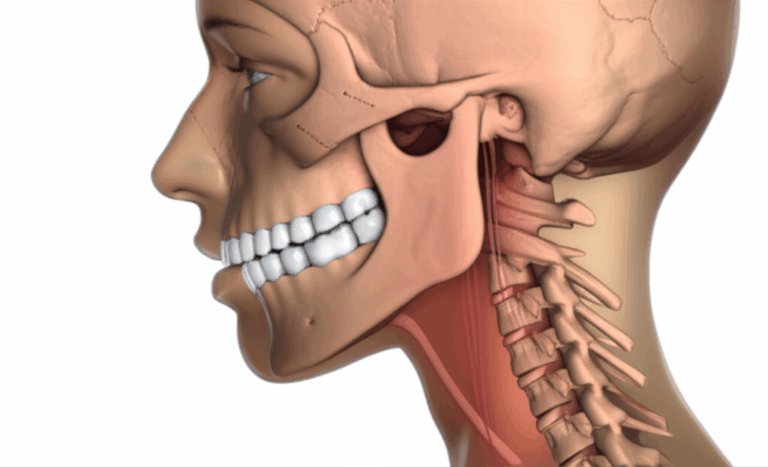
Can You Die From Dental Problems?
It started with a dull ache in my lower jaw. I did what a lot of us do: I ignored it. "It’s probably nothing," I told myself. "It’ll go away." But it didn’t. It grew from a small ache to a loud pain, a non-stop, throbbing pain that made it hard to eat, sleep, or even think. That’s when I started to get scared. I started Googling, and my simple search for "bad toothache" quickly turned into something way scarier. I found stories that seemed like something from a horror movie—stories of people who died from a simple tooth infection. The question stuck in my head and wouldn’t leave: Can you really die from dental problems?
I decided I had to find the real answer, not just to stop worrying, but because it felt like one of those secret health facts we all need to know. This article is what I found from looking into it a lot. It’s my story, what I found from a lot of research, and the scary truths I learned. I’m sharing this because what I learned is too important not to share. If you’ve ever ignored a toothache or avoided going to the dentist, this is for you. The answer to that scary question is yes, and knowing how and why is the first step to make sure it dont happen to you or someone you love.
Article Outline
- My Scare: When a “Simple” Toothache Got Real Bad
- The Real Truth: Yes, Tooth Problems Can Kill You
- How a Small Tooth Infection Gets Deadly
- The Killers: Sicknesses from Tooth Infections
- The Slow Problem: How Bad Mouth Health Links to Body Sickness
- Who’s at Most Risk? Knowing if You’re in Danger
- My Plan to Stop a Dental Disaster
- Last Thing: Your Mouth is the Door to Your Body
My Scare: When a “Simple” Toothache Got Real Bad
My journey into this topic wasn’t from a book; it was real and, honestly, super scary. It was a Tuesday when the ache started. By Friday, the right side of my face was so swollen you could see it. I was taking a lot of ibuprofen, but it hardly did nothing for the pain. I felt hot, like I had a fever, and totally wiped out.
I still tried to play it down. “It’s just a bad tooth,” I told myself, trying to believe it. But when my wife took one look at me that evening, she looked scared. She pointed out that the swelling was moving down my neck. That’s when I really started to panic. Soon, it was hard to swallow. It felt like a lump in my throat, making every breath feel important.
We ended up in the emergency room late that night. The ER doctor looked serious. He was straight with me. He told me I had a bad tooth infection, a dental abscess, that was spreading into the skin around it. He used a word I’d never heard before: “cellulitis.” He explained that the infection wasn’t just in my tooth no more; it was spreading. If it kept spreading, it could block my breathing or get in my blood, leading to a body-wide infection called sepsis.
Lying in that hospital bed, with an IV dripping medicine into my arm, the question wasn’t just some idea anymore. It was real. I could feel the heat from the infection in my own face. I was proof that a dental problem wasn’t just a “dental problem.” It was a medical emergency. That experience was my wake-up call. It made me face the important link between my mouth and the rest of my body—a link that, for too many of us, we ignore, and that’s dangerous.
The Real Truth: Yes, Tooth Problems Can Kill You
Let’s be clear. The answer is a definite, but not common, yes. You can die from dental problems. While it’s not common now with modern medicine and antibiotics, it’s something we have to take serious. It’s not the tooth itself that’s the killer, of course. The real killer is an infection that gets out of control.
Think of your mouth like a busy city. Most of the things living there (bacteria) don’t hurt you or even help. But if the city’s walls (your tooth enamel and gums) get broken, bad bacteria can get in and take over.
This is what happens with a simple cavity you don’t fix. It’s a small hole in the wall. If left alone, bacteria go right through that hole and into the soft, living stuff inside your tooth, called the pulp. Once the pulp gets infected, your body’s defense system starts working, and sends white blood cells to fight the bad guys. This fight makes pus—a gross mix of dead bacteria, dead white blood cells, and body fluid. This pocket of pus is what we call a dental abscess.
An abscess is your body’s way to try and keep the infection in one spot. But if the infection is too strong or your body is weak, the pocket breaks. The infection gets out. This is the key moment when a dental problem changes from a small problem to a big, deadly emergency for your whole body.
How a Small Tooth Infection Gets Deadly
It’s a scary chain of events, and I learned that understanding each step is key to understand the danger. It don’t just happen at once; it’s a few steps that you can see coming, and you can stop them.
The Journey of an Infection: From Cavity to Crisis
The Hole (The Unfixed Cavity): It all starts with a rotten tooth. Sugars in our food feed certain bacteria in our mouths, and these bacteria make acid. This acid eats the hard outside part of your tooth, the enamel. At this point, you might not feel a thing. It’s a quiet attack.
The Attack (Pulpitis and Abscess): Once the rot gets through the enamel and the softer layer under it, it gets to the pulp. The pulp is the tooth’s nerve center, full of blood vessels and nerves. The bacteria make it swollen and infected here—a sickness called pulpitis. This is when the pain starts. As the pulp stuff dies, your body makes that abscess, a bag of pus, usually at the root of the tooth.
- The Escape (The Infection Spreads): This is the point where it gets bad. The pressure from the abscess has to go somewhere.
- It can dig through the bone of your jaw.
- It can push into the soft parts of your gums, cheek, or the bottom of your mouth (like mine did).
- Most dangerous, it can get into your blood.
Once the bacteria get away from the tooth, they can get to the rest of your body. They can travel to your heart, your brain, your lungs—anywhere.
The Killers: Sicknesses from Tooth Infections
When a tooth infection spreads, it can cause certain sicknesses with names that are often what kill you. Learning about these was like reading about the bad guys in this scary story.
Sepsis: Your Body’s Crazy Reaction
This is one of the most common ways a tooth infection can kill you. Sepsis isn’t the infection itself; it’s your body’s crazy, life-threatening reaction to an infection.
Imagine your body’s defense system is a good army. Normally, it attacks the bad guys carefully. But in sepsis, the army goes crazy. It starts a huge, all-over attack that doesn’t just hurt the bacteria—it starts hurting your own body parts and organs. It’s like a huge friendly fire accident.
The chemicals your body lets out in your blood cause swelling all over, which can lead to blood clots and leaky blood vessels. This hurts blood flow, robbing your organs of air and food. Soon, your organs can start to shut down.
Signs of sepsis are a medical emergency. If you have an infection and have these, call 911 right away:
- Fast heart rate or weak pulse
- Fever, shaking, or feeling very cold
- Feeling confused or not knowing where you are
- Shortness of breath
- Extreme pain or feeling very bad
- Clammy or sweaty skin
Ludwig’s Angina: The Scary Airway Blocker
This is what my ER doctor was most scared of for me. Ludwig’s Angina is a fast-spreading infection in the bottom of your mouth, under the tongue. It’s most often from an infected back tooth.
What makes it so scary is what it does. The infection makes your tongue, mouth floor, and neck swell up huge and fast. This swelling can push the tongue up and back, and block your airway completely. People with Ludwig’s Angina can really choke you to death. It’s a very fast and scary sickness that needs a doctor right away to open up your airway, often with intubation or a surgery called a tracheotomy.
Brain Abscess: When the Infection Gets to Your Control Center
This is like a bad dream. Yes, an infection from a tooth, especially a top tooth, can go to your brain. It’s rare, but it happens. The bacteria can spread through the blood vessels or, because it’s so close, spread right through the spaces in your face into your head.
Once in the brain, the bacteria can make an abscess, just like at the root of your tooth. But an abscess in the brain makes your brain swell and puts pressure on it, leading to bad nerve problems like terrible headaches, seizures, acting different, and finally, coma and death if not treated fast with surgery and strong antibiotics.
Endocarditis: An Attack on Your Heart
Our mouths are full of bacteria. Usually, they stay there. But normal dental work, or even just hard brushing and flossing, can sometimes let a few bacteria get in your blood. This is called bacteremia. For most healthy people, your body’s defenses cleans them out fast.
But, if bacteria from a dental abscess get in the blood, they can go to the heart and stick to hurt parts of it, like the valves. This causes an infection of the inside lining of the heart and valves, known as infective endocarditis. This infection can wreck your heart valves and lead to deadly problems like heart failure and strokes. People who already got heart problems or fake heart valves are at a much higher risk.
The Slow Problem: How Bad Mouth Health Links to Body Sickness
Besides the fast infections, I found out about a more sneaky way your mouth can hurt you. Long-term swelling from gum disease (periodontitis) is like a slow poison, and helps cause some of the worst sicknesses we have today.
The Heart Disease Connection
Researchers found a strong connection between gum disease and heart disease. The main idea is that the long-term swelling from gum disease can cause swelling all over the body, including in the arteries. This body-wide swelling is a main cause of atherosclerosis, which is when your arteries get hard and narrow and leads to heart attacks and strokes. The same gunk on your teeth has been found in the gunk inside arteries.
Diabetes: A Dangerous Two-Way Street
The link between diabetes and gum disease is a bad cycle. It goes both ways.
- Diabetes makes gum disease worse: People with diabetes, especially when it’s not under control, get infections easier. High blood sugar can make the body’s defenses weak, making gum disease happen more and be worse.
- Gum disease makes diabetes worse: On the other hand, having a bad infection like periodontitis can make it harder for your body to control blood sugar. The swelling can make your body not use insulin as good, making your diabetes medicine not work as well. It’s a dangerous circle.
This link shows why good dental care is so important for anyone with a long-term sickness like diabetes. It’s not just about saving your teeth; it’s about taking care of your whole health.
Who’s at Most Risk? Knowing if You’re in Danger
While a tooth infection can get bad for anyone, I learned that some people are in way more danger. Knowing about these risks is really important.
- People with a weak defense system: Anyone with a weak immune system is at high risk. This is people getting chemotherapy for cancer, people with HIV/AIDS, people who got a new organ and take drugs to stop their body from fighting it, or people with sicknesses where your body attacks itself. Their body’s defenses are already weak, which makes it easier for a tooth infection to take over.
- People with other sicknesses: Like we saw, those with diabetes or heart valve problems are in a lot of danger from the body-wide problems from mouth bacteria.
- Older people: Older adults often have other health problems, take a lot of medicines that can make their mouth dry (which makes cavities more likely), and may have trouble keeping their mouth clean, putting them at higher risk.
* People who can’t get dental care: This is a big reason people don’t think about. For many, the cost of dental care is a big problem. Others live in places with no dentists close by. And for some, fear of the dentist is so bad they avoid it until it’s an emergency. Not getting check-ups lets little problems get bigger and meaner.
My Plan to Stop a Dental Disaster
After my ER visit, I became a real believer in taking care of my teeth before there’s a problem. I made my own plan, some rules I have to follow. It ain’t complicated, but you got to stick with it.
Don’t Ignore the Whispers: Know the Warning Signs
The first rule is to listen to your body. A problem don’t usually start by screaming; it whispers. I learned to never ignore these warnings again:
- A toothache or sensitive tooth that doesn’t go away.
- Swollen, red, or sore gums.
- Pus or a “pimple” on the gum.
- A bad taste or bad breath that’s always there.
- Pain when you chew.
And these are not just warnings, they are EMERGENCY signs. If you have them with a toothache, go to the ER right away:
- Swelling in your face, jaw, or neck.
- Fever.
- Trouble swallowing or breathing.
- Bad headache or feeling confused.
The Power of Stopping Problems: My Must-Do Habits
The best way to not have a dental disaster is to stop it before it starts. What I do is simple but it works. It’s the basic teeth information we all learn as kids, but now I do it like someone who knows how serious it is.
- Brush good twice a day for two full minutes. No excuses.
- Floss every day. This is a must-do. Flossing cleans the 35% of your tooth that a brush can’t get to. It’s the best way to stop gum disease.
- See my dentist for regular check-ups and cleanings. I now see this as a really important health check-up, just like a physical. It lets a professional find problems when they are small, simple, and cheap to fix.
- Eat a good diet and have less sugary drinks and snacks. Less sugar means less food for the acid-making bacteria.
Getting Your Smile Back After the Fight
Sometimes, even if you take good care, you might have a bad problem. After what I went through, the tooth couldn’t be saved and they had to pull it. I talked with my dentist about ways to replace it. He told me about how technology has changed restorative dentistry. He showed me how they work with a top-notch digital dental lab to make super exact implants and crowns. These labs use digital scans of your mouth, so you don’t need those yucky, uncomfortable molds. It’s cool how technology helps you get your smile and your confidence back after being sick.
Last Thing: Your Mouth is the Door to Your Body
My trip from a hurting tooth to the ER taught me a big lesson: your mouth ain’t its own thing. It is the door to your whole body. The health of your teeth and gums is tied together with the health of your heart, your brain, and your defense system.
Ignoring a tooth problem because you’re scared, it costs too much, or it’s a pain is a risk you can’t take. That little ache could be the first sign of a much bigger problem.
So please, take it from me, I learned the hard way. Listen to those little aches. Take your mouth health serious. Brush, floss, and see your dentist all the time. It’s not just about having a pretty smile or not getting a filling. It’s about respecting the important link between your mouth and your life. It could, for real, save you.








